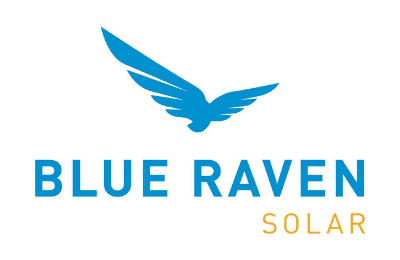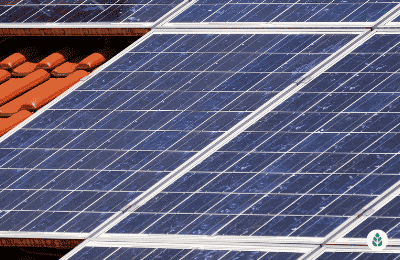 Reviews
Reviews
Ohio Solar Incentives (Rebates, Tax Credits & More in 2024)
In this guide to Ohio’s solar incentives, you’ll learn:
- How much money can solar incentives save you on solar panels in Ohio?
- How do you file for the federal solar tax credit in Ohio?
- What are the best solar benefit programs available to Ohio homeowners?
Each product and or company featured here has been independently selected by the writer. You can learn more about our review methodology here. If you make a purchase using the links included, we may earn commission.
Do Ohio Solar Incentives Make It Affordable for Homeowners to Go Solar?
Installing solar panels can be expensive, but Ohio offers a handful of incentive programs that can help bring down the overall cost of your photovoltaic (PV) equipment.
The average Ohioan will pay around $28,710 for a complete solar installation. This assumes a few things:
- The average cost per watt of solar in the state is around $3.19
- You have energy needs that require a 9 kilowatt (kW) system
While this sounds expensive, the federal tax credit can effectively bring this total down to an average of $20,097, and that’s before factoring in any other incentives.
Ohio doesn’t offer the greatest solar incentive programs. It’s ranked 22nd in the country in terms of solar adoption by the Solar Energy Industries Association (SEIA), and it has a less-than-impressive Renewable Portfolio Standard (RPS) goal of producing 8.5% of its energy via renewable sources by 2026.1
Still, there are a handful of benefit programs available that can lower the upfront cost of a solar installation.

Blue Raven Solar

Regional Service
Average cost
Pros
- Industry-leading in-house financing
- Competitive pricing
- Excellent reputation
Cons
- Doesn't offer solar batteries (coming 2022)

Blue Raven Solar

Regional Service
Average cost
Pros
- Industry-leading in-house financing
- Competitive pricing
- Excellent reputation
Cons
- Doesn't offer solar batteries (coming 2022)

Icon Solar
Regional Service
Average cost
Pros
- Many years of experience
- Comprehensive service offerings
- Great warranty coverage
Cons
- No leases or PPAs
In the table below, we’ll include a quick breakdown of all of the incentives available in Ohio for solar conversion. We’ll explain each of these in greater depth in the sections that follow.
| Incentives for Solar Conversion in Ohio | Incentive Type | Description | Occurrence | Estimated Dollar Amount You Can Save |
| Federal Solar Investment Tax Credit (ITC) | Federal | Provides a credit to your income tax burden in the amount of 30% of your entire system value | One time: Applied when you file your taxes for the year you install your solar panel system | $8,613 on average in Ohio (assuming a cash purchase) |
| Solar Renewable Energy Credits (SRECs) | State | Lets you accrue credits for all solar production that can be sold on the local SREC market for a profit | Ongoing: Always in effect | Varies based on Ohio’s SREC market conditions |
| Solar Sales Tax Exemption | State | Sales tax on all solar equipment — including panels, inverters and batteries — is waived | One-time: Applied when you purchase your solar power system | $1,650 on average (assuming you pay the average price for your system in Ohio) |
| Energy Conservation for Ohioans (ECO-Link) Program | State | Reduces solar financing interest rates by up to 3% | One-time: Goes into effect prior to installation when you apply for the program | Varies based on your system size, your energy needs, your solar company and more |
| Net Metering | Local | Credits you for energy you generate beyond what you consume. Credits can offset future utility bills | Ongoing: Always in effect | Varies primarily based on your utility company, but also system size, your average monthly electric bill and more |
| City of Cincinnati Property Tax Exemption | Local | Prevents the property value from your solar energy system installation from driving up your taxes | Ongoing: Always in effect | Varies based on the size of your solar system and the assessed value of your property |
| City of Cleveland Property Tax Exemption | Local | Prevents the property value from your solar energy system installation from driving up your taxes | Ongoing: Always in effect | Varies based on the size of your solar system and the assessed value of your property |
| Hamilton County Home Improvement Program | Local | Provides affordable financing options for solar equipment up to $50,000 and at low interest rates | One-time: Goes into effect prior to installation when you apply for the program | Varies based on your system cost, your energy savings and more |
| Ohio Property-Assessed Clean Energy (PACE) Financing | Local | Offers accessible and affordable PV loan options with payments made via taxes | One-time: Goes into effect prior to installation when you apply for the program | Varies based on your system cost, your energy savings and more |
What Do Ohio Residents Need to Know About the Federal Solar Credit?
The federal solar credit is one of the most appealing financial incentives for solar conversion available in Ohio. It’s offered by the federal government, and all new solar customers are automatically eligible.
Basically, the credit is for 30% of your system value, which gets applied to your tax burden for the year you install your solar equipment. If your system costs $28,710, the average price of solar in Ohio, this credit will average out to $8,613.
Keep in mind that this amount gets credited to the income taxes you owe, which means you won’t be able to take the credit if you don’t owe the government money when you file your taxes. You can take a partial credit if you owe less than the full credit amount, and any remaining credit can be applied to future tax years for up to five years.
The federal credit has been available since 2005, at which time the credit amount was 30% of your system value. That rate dropped to 26% in 2022 and was scheduled to drop to 22% in 2023 and disappear in 2024.
Thanks to the Inflation Reduction Act, the credit was renewed in 2022 with the following rate schedule:
- The credit rate will be 30% for systems installed between 2022 and 2031
- The credit rate will drop to 26% in 2033
- The credit rate will drop to 22% in 2034
- The credit will no longer be available in 2035
How to Claim the Federal ITC in Ohio
Claiming the federal credit is a simple process and should only take a few minutes of your time come tax season. You can follow the steps below to ensure you take the credit and effectively reduce your cost of going solar.
- Step 1: When it’s time to file your taxes for the year you install your solar equipment, go to the IRS’s website and print out IRS form 5695. This is the form for reporting Residential Energy Credits.
- Step 2: Fill out the form. You’ll need some basic system and installer information, including the size and cost of your system and the name and address of your solar panel installation company. The form should take just a few minutes to complete.
- Step 3: File the form with your taxes, or have your accountant or tax software file it for you. Tax filing programs like TurboTax and HR Block have a built-in questionnaire that helps you fill out the appropriate form quickly.
EcoWatch’s Opinion on the Federal ITC in Ohio
In our opinion, the federal credit is the best incentive available in Ohio. If you only have time to file for one incentive, make sure it’s this one. The required form takes just a minute or two to complete, and you could end up with a credit averaging around $8,613.
This incentive does come with a caveat, which we mentioned briefly above: you can only take the credit if you owe money on your federal tax return. If you don’t, the credit remains unusable. If you suspect that you’ll owe at least a few thousand dollars in taxes over the next five years, we strongly recommend taking this incentive.
What You Need to Know About SRECs in Ohio
As an Ohio solar customer, you’ll earn Solar Renewable Energy Credits (SRECs) for the energy your panels generate. You get awarded one credit for every 1,000 kilowatt-hours (kWh) — 1 megawatt-hour — your panels produce. You can then sell your SRECs on the local market, where electric companies buy them to offset their fossil fuel consumption to meet the state’s RPS goals.
In 2024, the average cash value of an SREC in Ohio fluctuated between $3 and $12. Most systems generate enough energy to earn around one credit per month, meaning Ohio homeowners can earn between $50 to $100 in a year.
How to Claim the SRECs in Ohio
Claiming SRECs in Ohio is a simple process that requires minimal work on your part. You can follow the steps below to ensure you take part in this incentive.
- Step 1:Choose a solar panel installer that can opt you into the SREC program upon completion of the installation process.
- Step 2: Proceed with installing your panels.
- Step 3: Keep track of your earned credits and payouts to ensure your production is being credited.
EcoWatch’s Opinion on Ohio SRECs
SRECs provide minimal value in Ohio — at most $100 or so per year. However, it takes virtually no effort on your part to opt into this incentive. This isn’t enough of an incentive to convince prospective solar customers to convert to solar energy, but it is a nice perk that can increase your energy savings.
Watch Below: What Should You Know About Recent Changes to the Solar Tax Credit?
What You Need to Know About the Sales Tax Exemption on Solar Equipment in Ohio
The State of Ohio waives all sales tax on solar equipment, including panels, inverters, solar batteries, electric vehicle chargers and more. This helps reduce the upfront cost of solar panels and makes renewable energy sources a bit more accessible all around.
Given the state sales tax rate of 5.75% and the typical system cost of $28,710, you can expect this solar tax exemption to save you approximately $1,650 on your initial system price.2
How to Claim the Exemption for Sales Tax for PV Equipment in Ohio
The sales tax exemption is automatically applied to all solar equipment, so there’s no action that you need to take to receive this benefit. You simply purchase your solar equipment, and the entire cost will be exempt from sales tax.
EcoWatch’s Opinion on the Sales Tax Exemption in Ohio
The exemption for sales tax in Ohio is another outstanding incentive because it takes no effort on your part to save money. You’ll automatically avoid sales tax — an average of over $1,650 in Ohio — on solar equipment when you purchase it.
What You Need to Know About the ECO-Link Program in Ohio
The ECO-Link program is designed to reduce financing costs for solar loans, which ultimately makes renewable energy more accessible and affordable to residents throughout Ohio. Specifically, it offers interest rate reductions of up to 3% on 5-year loans for up to $25,000 or 3% rate reductions on 7-year loans for between $25,000 and $50,000.
How to Enroll in the ECO-Link Program in Ohio
You can follow the steps below to take part in the ECO-Link program and get more affordable financing for your solar project:
- Step 1: Find a PV loan provider that takes part in the program. For a list of eligible financiers, you can contact the Ohio Treasurer’s office.
- Step 2: Let your financier know you’re interested in the program. The lender will submit the required documents and the online application to the program administrator.
- Step 3: You’ll receive confirmation that you were approved for the loan program. At this point, continue with your installation, and your lender will handle the additional documentation requirements.
EcoWatch’s Opinion on Ohio’s ECO-Link Program
The ECO-Link program offers great value for any Ohio property owner planning on financing a solar array. If you think a PV loan is the best payment option for you, you should contact an eligible financier and discuss the program to see if you qualify. The paperwork you need to fill out is minimal, and the application doesn’t cost you anything.
What You Need to Know About Ohio’s Net Metering Program
Net metering — also called net energy metering (NEM) — is a billing arrangement that benefits solar customers by offering energy credits for all excess energy production that comes from their solar panels.
When your production exceeds your consumption — like on sunny days — all of the excess power your system produces will be sent to the grid. You can call on that energy at a later date if you need to, like on cloudy days, at night or when your energy needs are greater than your production levels.
The best-case scenario — which leads to the greatest energy savings — would be credits provided at the full retail rate.
The Public Utilities Commission (PUC) in Ohio does mandate net energy metering for all investor-owned utilities (IOUs) and electric cooperatives. However, it doesn’t specify a credit rate. As such, most utility companies offer a less appealing — but still helpful — avoided-cost rate for excess production.
How to Enroll in Net Energy Metering in Ohio
Enrolling in net energy metering doesn’t require any work on your part, although you may have to make a quick phone call to your utility provider to ensure you’re eligible. You can follow the steps below to confirm:
- Step 1: Contact your electric company to confirm you have a bi-directional meter installed on your home. This is necessary for interconnection, which lets you take part in net energy metering.
- Step 2: If you don’t, ask your provider to install one. This should be done at no cost to you. If you do have one, you’re all set to begin taking advantage of net energy metering. Your solar company will apply on your behalf as part of the installation process.
- Step 3: It’s not necessary, but it’s a good idea to monitor your energy bills for a few months after installation to confirm that your energy credits are registering. Your bill should reflect much lower net consumption or specifically state how much energy your panels offset for the billing period.
EcoWatch’s Opinion on Net Energy Metering in Ohio
Net energy metering is a great incentive in Ohio, especially since there’s minimal work you need to do to enroll. This policy will help you reduce electric bills over time, which bumps up your total savings and reduces the panel payback period, which averages around 11 years at most in Ohio.
Net energy metering isn’t as appealing in Ohio as it is in some other states because the credits you earn per kilowatt-hour (kWh) aren’t set at the retail rate in most cases. Still, this is a worthwhile incentive to pursue, seeing as it doesn’t cost you much time or any money to enroll.
Local Solar Incentives in Ohio
In addition to the federal and state-wide solar perks mentioned above, some Ohio homeowners will also have access to some local incentives. These are offered by certain municipalities. We’ll list the available incentives below, along with a brief explanation of each.
- Cincinnati Property Tax Exemption: This is a tax exemption offered to residents of Cincinnati. Normally, home improvements like solar adoption that raise the value of your home also cause your taxes to go up.3 This exemption prevents that from happening, which limits the financial burden of adopting solar.
- Cleveland Property Tax Exemption: This is an identical perk to the local incentive above, except it’s offered to residents of Cleveland instead.
- Hamilton County Home Improvement Program: Residents of Hamilton County have access to the Home Improvement Program, which provides financing options for up to $50,000 for solar equipment and other energy-efficiency home improvements. It includes low down payment requirements and below-average interest rates to make solar energy more accessible.
- Ohio Property-Assessed Clean Energy (PACE) Financing: PACE financing is a loan option with minimal down payment requirements and low-interest rates. It adds your monthly loan payment to your tax bill for easy repayment. Unfortunately, this can make your home less valuable to buyers and harder to sell, so it’s only generally recommended for homeowners who plan to live in their homes for at least the next 15 to 20 years.
Which Tax Incentives Are the Best in Ohio?
With all of the benefit programs we’ve listed above, you might be wondering which of these are most beneficial and which you can safely pass on. Below, we’ll include a brief list of what we believe are the most valuable incentives for solar equipment in Ohio that you should make sure you take advantage of.
Federal Solar Tax Credit
The federal credit is, by far, the best incentive you can take in Ohio, and it’s the one we recommend taking above all others. This provides an average credit of over $8,600 in Ohio, which can effectively bring down your system cost by 30%. Best of all, filing for this incentive is quick and painless, so it’s well worth the time you’ll take filling out the tax form.
Net Energy Metering
Net energy metering in Ohio isn’t the best because the credit rate for excess energy isn’t equal to the retail electricity rate. However, seeing as you don’t need to do anything or pay any fees to enroll, it’s still a good option for Ohio property owners.
The average long-term savings when you go solar in Ohio total around $32,468 when you pay for your system in cash, and that’s after the panels pay for themselves over the first 11 years or so. Net energy metering can help increase your total savings and shorten your payback period, making it a solid incentive to take advantage of.
SREC Program
The SREC program is another of our favorite solar perks in Ohio because it takes no effort on your part to enroll. It will only net you an average of $90 per year in energy credits, but over the life of your panels, that’s around $1,800 you’ll get back with minimal effort to enroll. Be mindful that the price of SRECs can fluctuate over time.
ECO-Link Program
Finally, the ECO-Link program is an outstanding option if you’re planning on financing your panels. There are virtually no downsides to enrolling, and you could save hundreds or thousands of dollars on your all-in solar panel cost if you qualify. The application process is quick and painless as well.
What Ohio Residents Need To Know About SRECs?
SRECs are the credits you earn for all solar production. In Ohio, you warn one credit for every 1,000 kWh you generate. The average 9 kW system in Ohio will yield an average of 10 credits per year, which comes out to approximately $90 worth of profit annually.
When you sign a contract with an Ohio solar installer, the company should automatically enroll you in the SREC program, which means taking this incentive requires no effort on your part.
The local SREC value can change based on many factors, but in 2024, each credit was worth approximately $4.
Are SRECs/TRECs taxable in Ohio?
Yes, SRECs are taxable in Ohio. These are not solar rebates or cash-back incentives, so you’ll have to report them as income. Thanks to the minimal amount of money most systems in Ohio earn via the SREC program, they shouldn’t have too significant of an impact on your tax burden.
What’s the Near-Term Outlook For More Incentives in Ohio?
As of right now, there is no evidence that Ohio property owners will see additional incentives for solar conversion in the foreseeable future.
One of the primary driving forces behind new incentive programs is a state’s RPS goals. Right now, Ohio has a modest RPS goal of generating 8.5% of its electricity from clean sources by 2026.4 It’s currently on track to meet that goal, so there is currently no mandate for additional incentives.
If Ohio implements a more aggressive RPS goal in the future, then new incentives will be more likely to pop up.
Read More About Going Solar in Ohio
- The Best Solar Companies in Ohio
- Ohio Solar Panel Cost Guide
- Are Solar Panels Worth It In Ohio?
- Guide to Solar Panels in Ohio
The cost information presented in this article is derived from a comprehensive analysis, incorporating data from multiple industry sources. The average cost per watt per state was calculated based on figures from Consumer Affairs, Energy Sage, and Berkeley Lab’s Electricity Markets & Policy Department. Additionally, monthly energy consumption and the average monthly cost of electricity were sourced from the U.S. Energy Information Administration, ensuring a well-rounded and accurate representation of the information presented.
FAQ
Below, we’ll answer some of the questions we see most frequently about incentive programs from aspiring solar customers in Ohio.
At this time, there are no initiatives in place that are set to improve the available incentives for PV equipment in Ohio in the next two years. The state is currently on track to reach its RPS goal, and unless a new, more aggressive goal is set, we don’t expect any additional incentives to be offered in your area in the near future.
The Inflation Reduction Act did two important things for renewable energy: it renewed the federal credit, and it added incentives for electric vehicles.
The federal credit was set to drop from 26% to 22% in 2023 and then disappear in 2024. This piece of legislation extended the credit for an additional ten years and upped the credit rate from 2022 through 2032 to 30%.
Additionally, it established larger incentives for individuals who purchase electric vehicles (EVs), with rebates now topping out at $7,500 per EV.
There is no current plan for Ohio to reduce the available incentives for solar conversion. It’s possible that some incentives will disappear or become less beneficial in 2026 when the state’s RPS goal expires, but there’s no way to tell for sure.
Many states are seeing net metering policies worsen or disappear entirely. The policy in Ohio is already far from ideal, so it can’t get much worse unless it goes away altogether. Again, there is no current talk of this happening in the next two years, so most electric cooperatives and IOUs will continue to offer this perk.
Yes! Installing solar panels on your home is expected to bump up your property value by around 4.1%, according to data from Zillow.3 Given the average home value of $216,115 in the Buckeye State, that’s an added value of around $8,860. This is a massive upside of going solar.
Plus, if you live in Cincinnati or Cleveland, that added value will be exempt from taxation, which means your taxes won’t increase as a result.
Top Solar Installers in Ohio Cities
Comparing authorized solar partners
-
- Industry-leading in-house financing
- Competitive pricing
- Excellent reputation
- Doesn't offer solar batteries (coming 2022)
A+Best Solar Financing2014Trina Solar, Canadian Solar, SolarEdge, Silfab, SunPower25-year manufacturer warranty; 10-year workmanship warranty, 2-year production guarantee
Having trouble deciding? Click below and use our process to receive multiple quotes instead:

 233k
233k  41k
41k  Subscribe
Subscribe 









